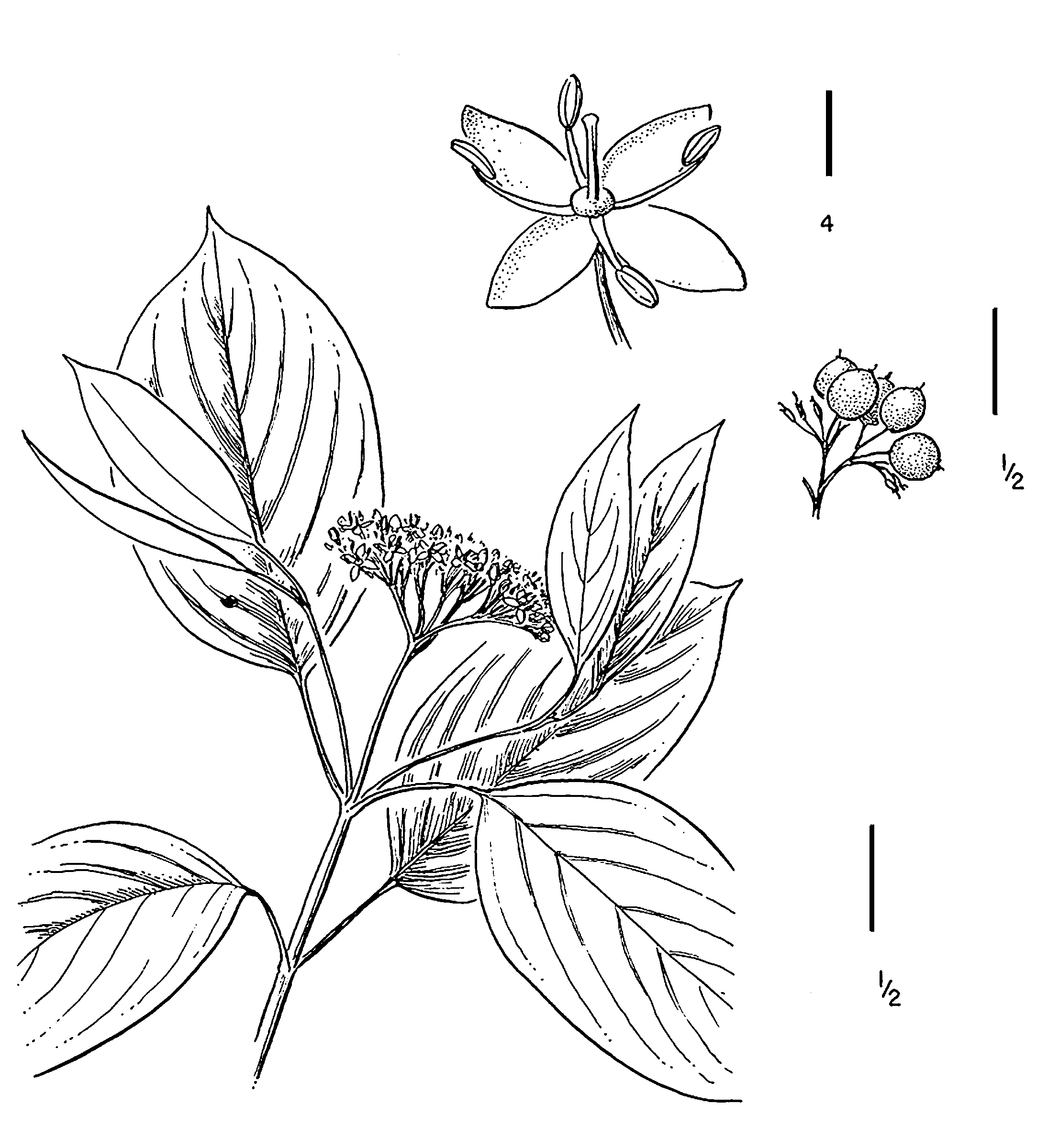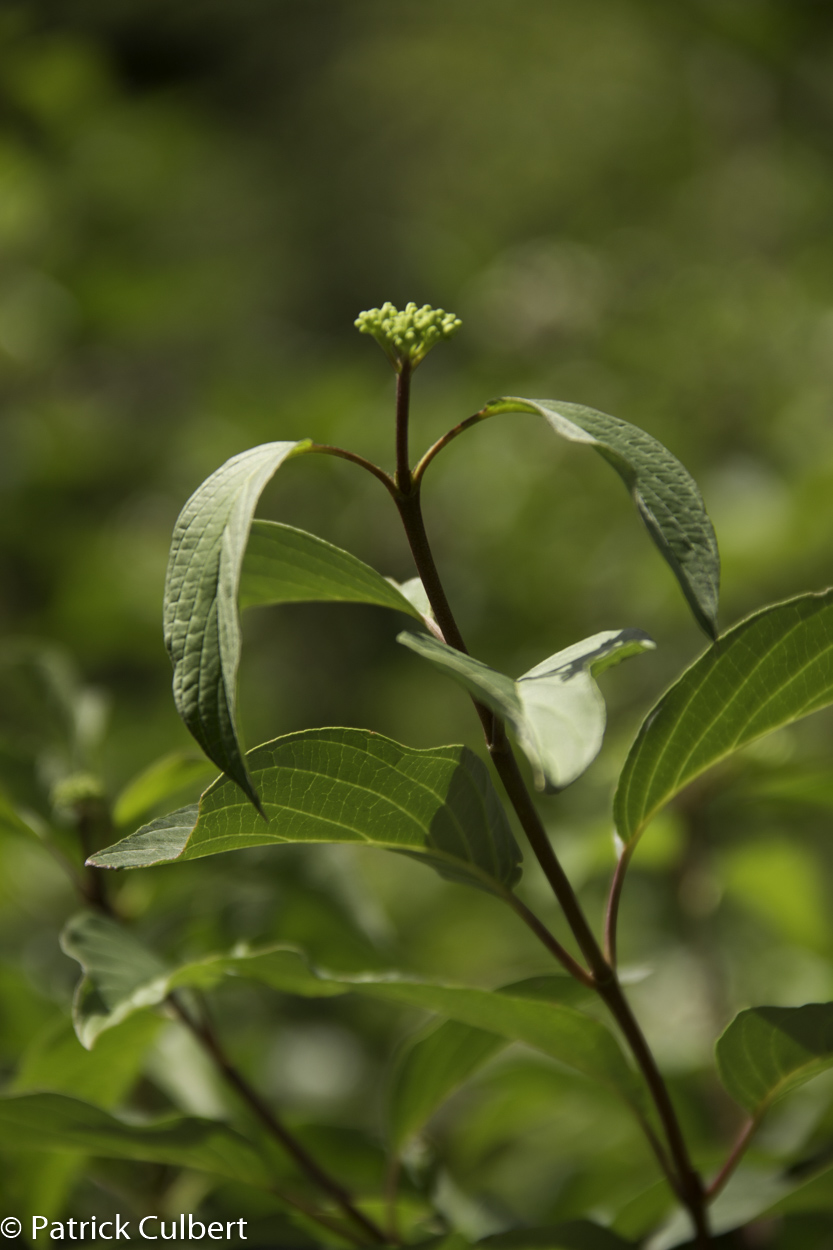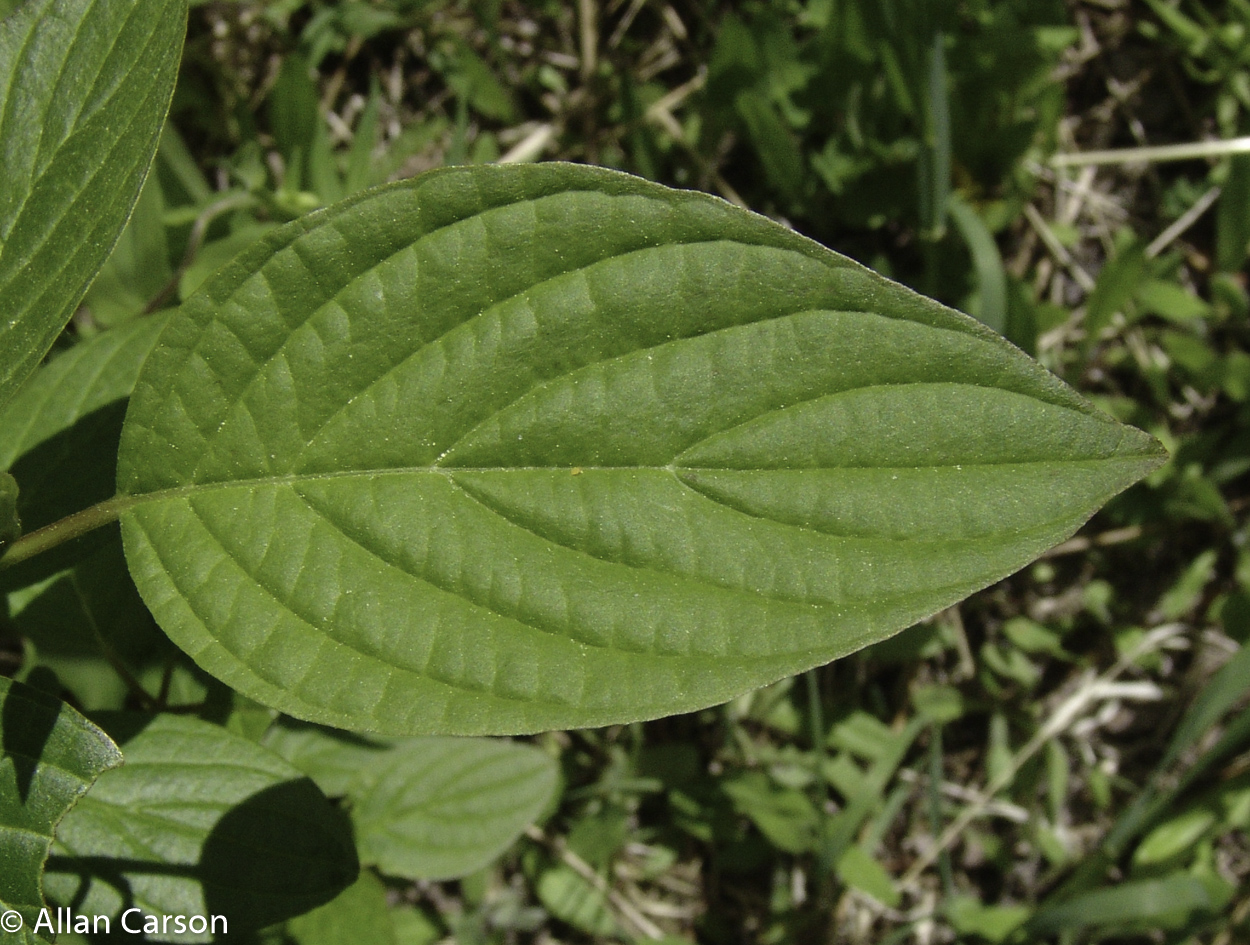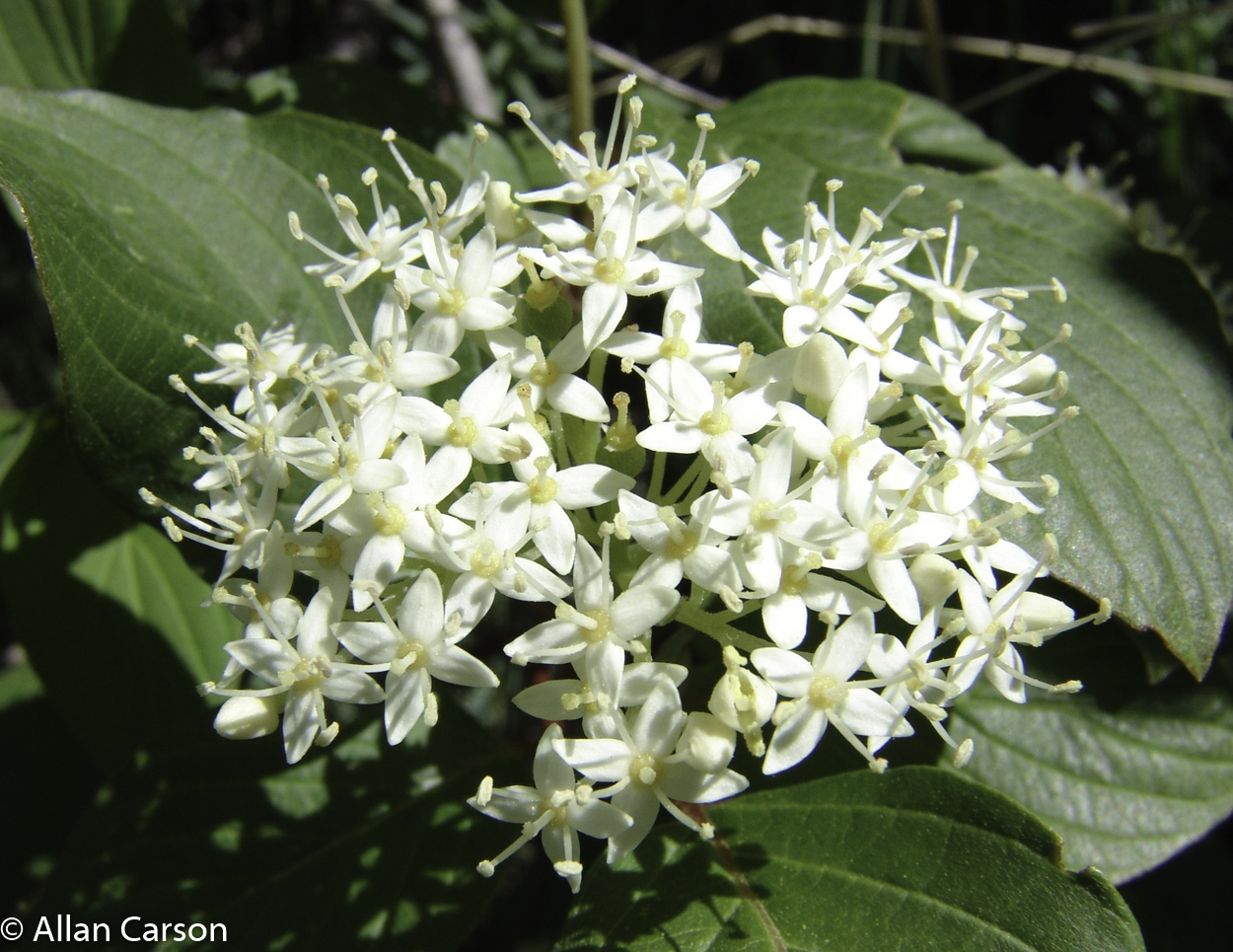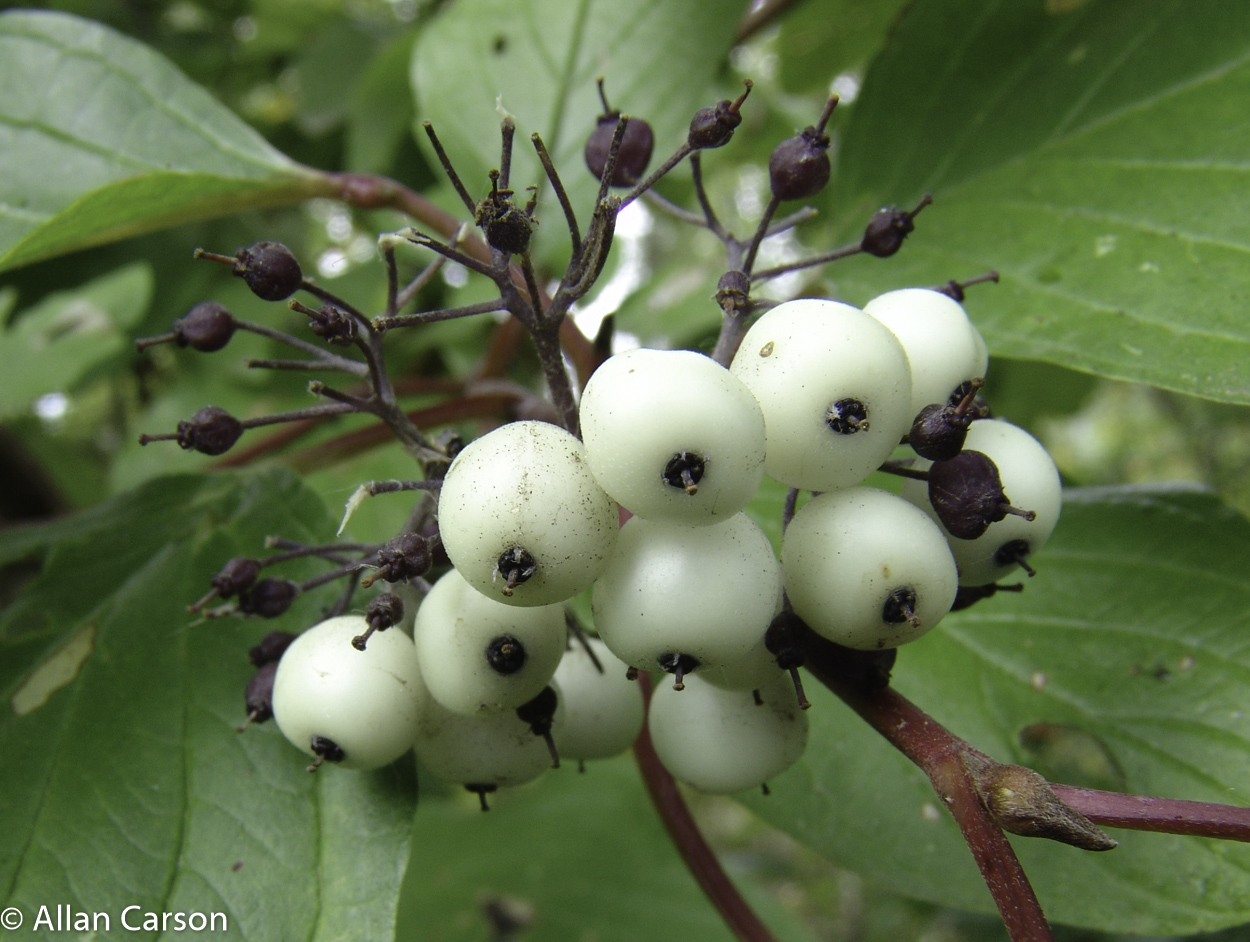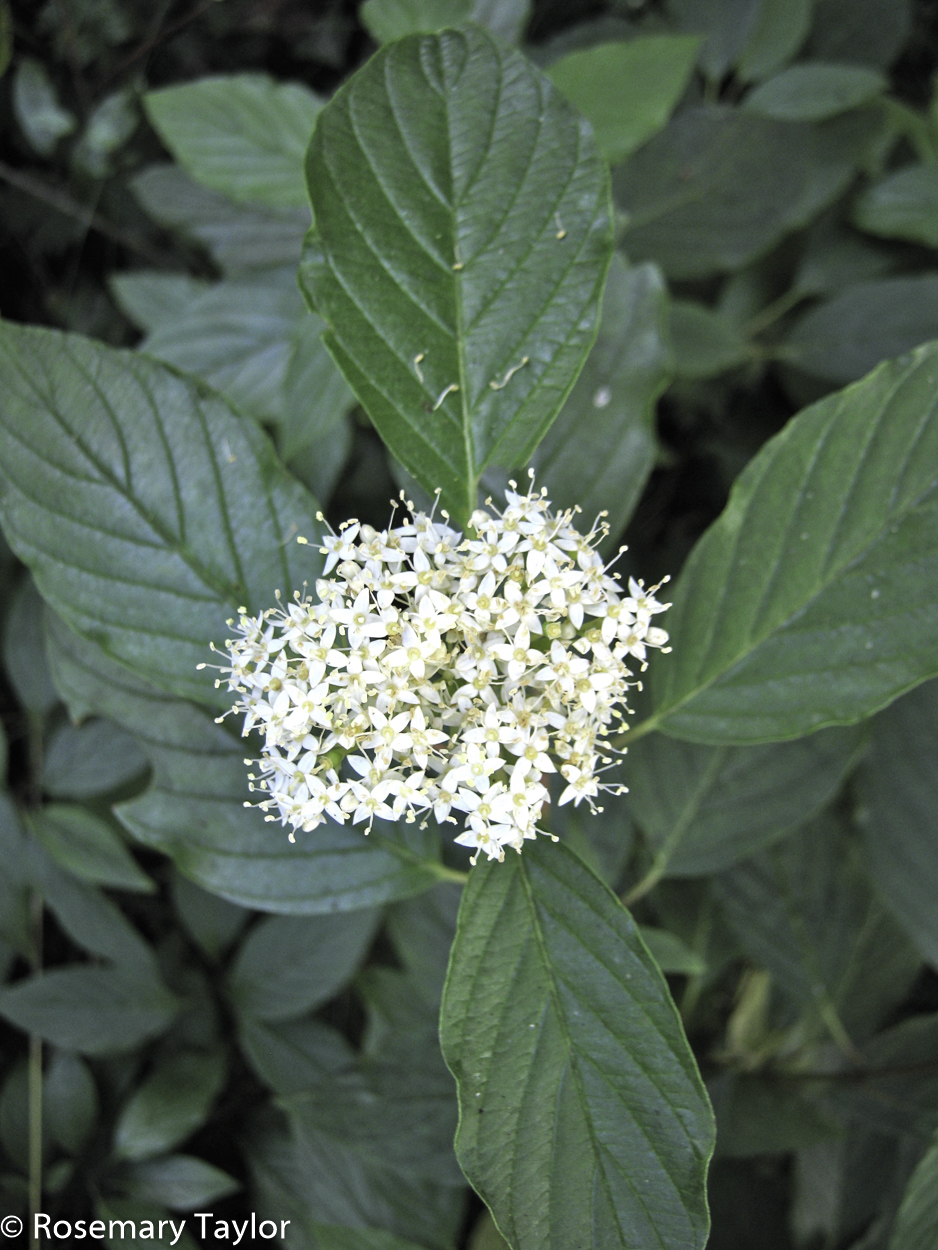Cornus sericea – red-osier dogwood
Common Name
red-osier dogwood
Family
Cornaceae
Scientific Name
Cornus sericea
Alternate Scientific Name
- Cornus stolonifera
Soil Moisture Regime (SMR)
- Medium (M)
- Wet (W)
Soil Nutrient Regime (SNR)
- Medium (M)
- Rich (R)
Video link
Hitchcock, C. Leo, and Arthur Cronquist. Flora of the Pacific Northwest: An Illustrated Manual © 1973. Reprinted with permission of the University of Washington Press.
General / Habitat
- A spreading shrub with many stems
- Typically occurs in moist soils, often in swamps, streambanks and forest edges,
- Low to middle elevations.
Key Identifying Characteristics
- Young stems typically dark red. This shrub is many-stemmed and spreading, from 1-6 m tall. The branching pattern is opposite, and lower branches sometimes form roots.
- Opposite, oval shaped leaves with a sharp point. The leaves have 5-7 prominent parallel veins that converge at the leaf base and tip. This is typical of the Cornaceae family). The leaves commonly turning reddish-purple in fall
- Small, white, flowers with 4 petals and stamens. Several flowers are borne in flat-topped terminal clusters.
- Fruit is small, round, white berries. They are not edible.
Lookalikes
- Flowering dogwood (C. nuttallii)
- a tree (up to 20 m tall) that produces large-bracted and showy flowers
- If it is young and non-reproductive, it can be distinguished by its dull brown stems
Interesting Characteristics
- Key source of food for ungulates in winter time
- Different parts of the plant favoured for medicinal use or consumption by different aboriginal peoples across North America
External References
Sources
Douglas, G.W. et al (Editors). 1998-2002. Illustrated Flora of British Columbia, Volumes 1 to 8. B.C. Min. Environ., Lands and Parks, and B.C. Min. For., Victoria, B.C.
Pojar, J. and A. MacKinnon. 2014. Plants of Coastal British Columbia Including Washington, Oregon & Alaska. B.C. Ministry of Forestry and Lone Pine Publishing. Vancouver, B.C.

